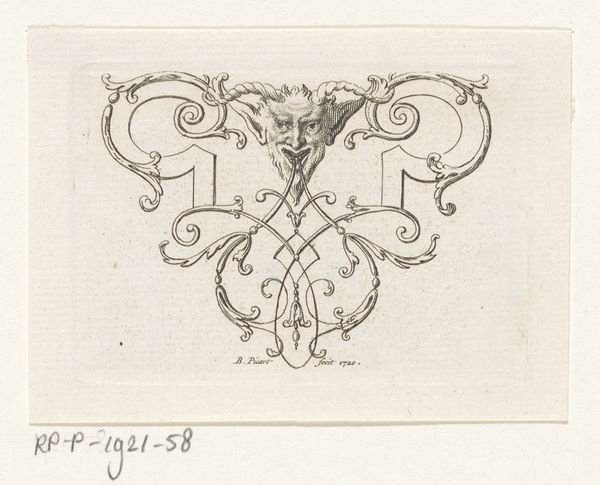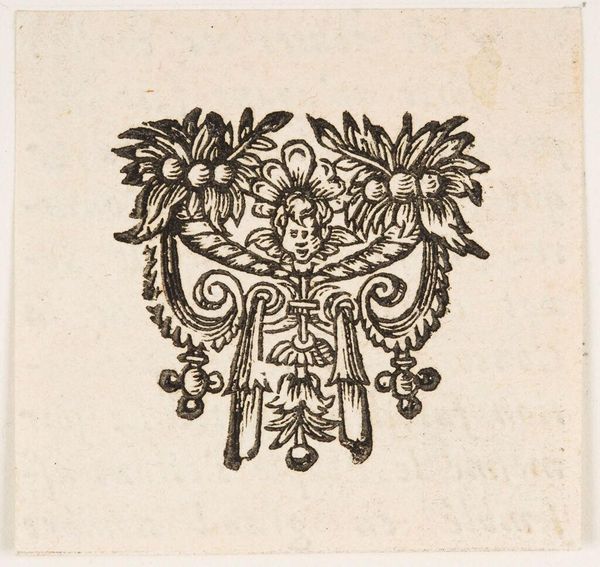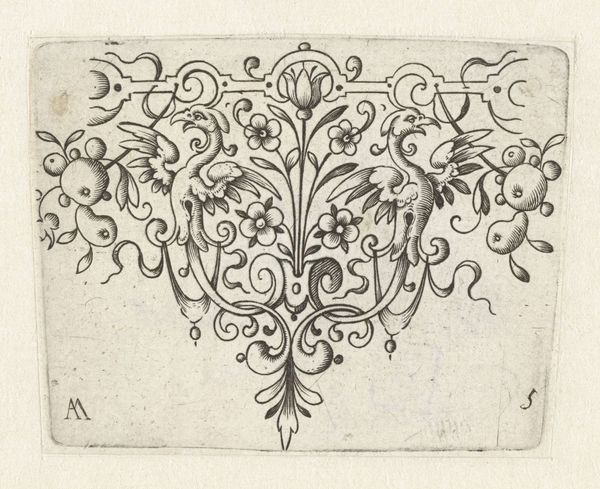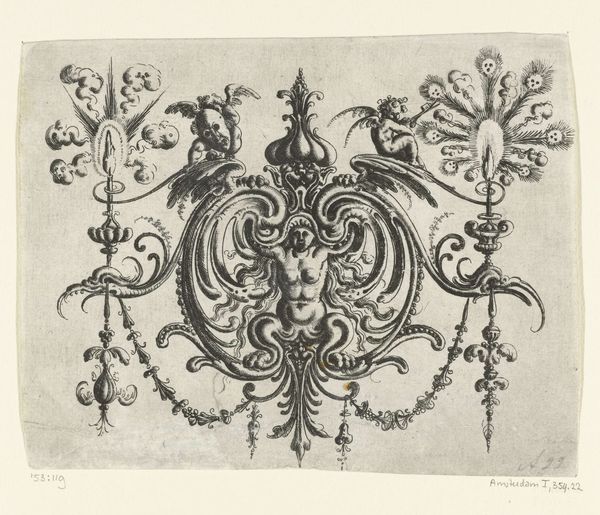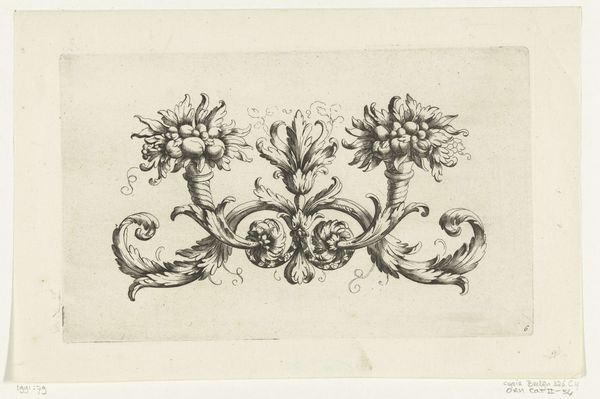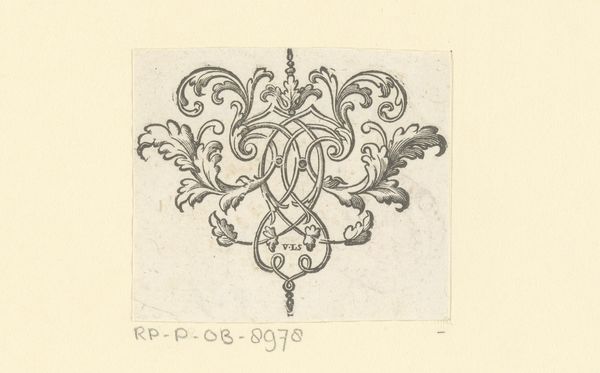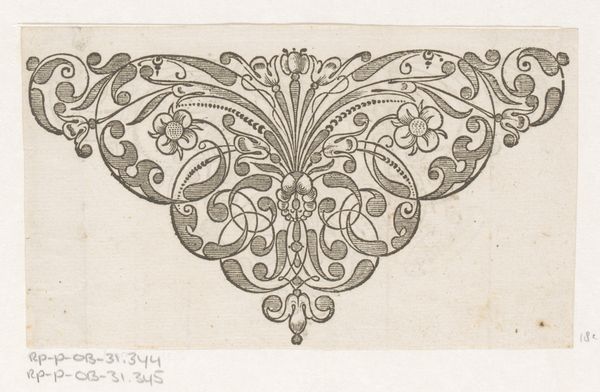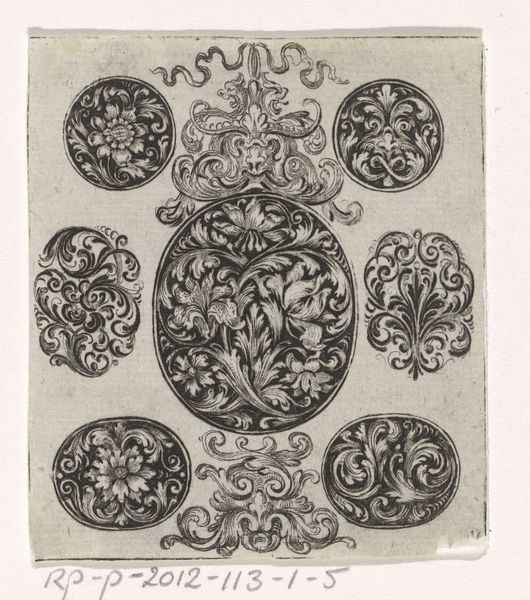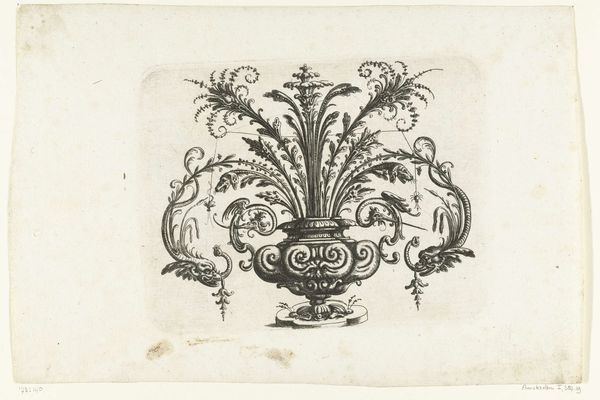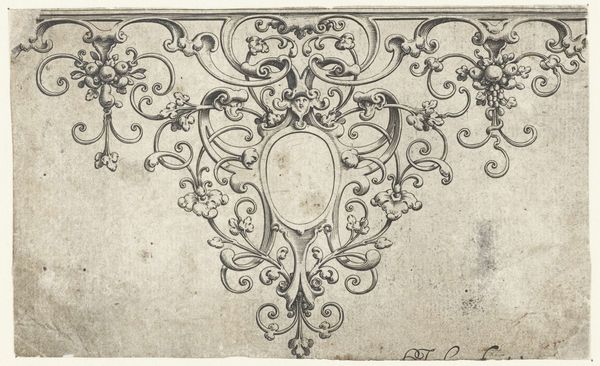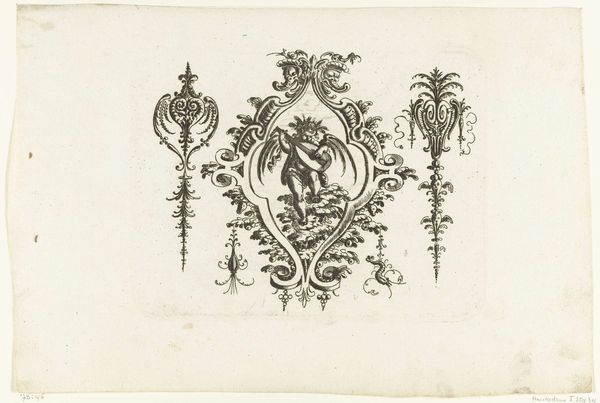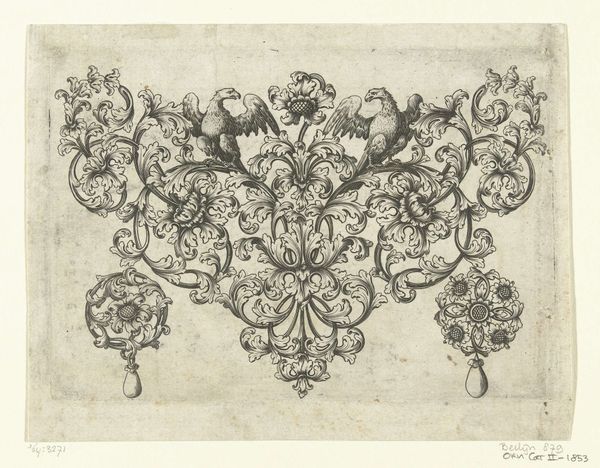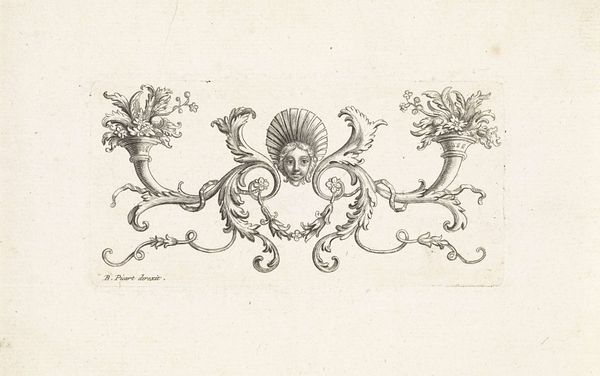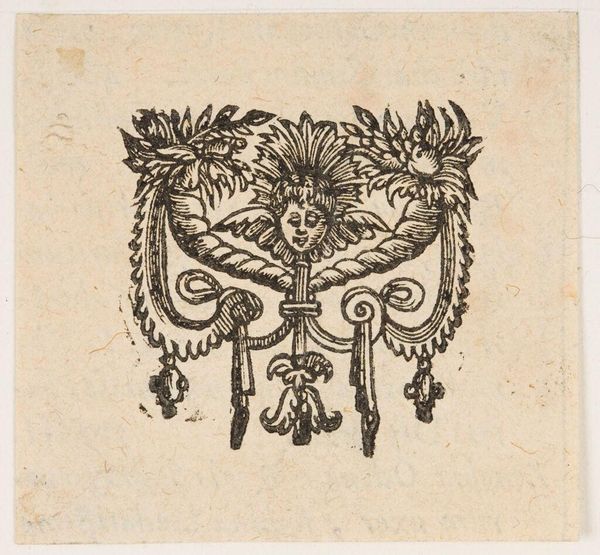
drawing, ornament, ink
#
drawing
#
ornament
#
baroque
#
ink
Dimensions: height 46 mm, width 57 mm
Copyright: Rijks Museum: Open Domain
Editor: Here we have an ink drawing titled “Vignet met een ornament met bloemen,” or “Vignette with an ornament with flowers” from the 17th century, by an anonymous artist. The precision of the drawing style is quite appealing to me. What can you tell me about its place in art history? Curator: Well, its function within society is really the key. Consider that, in the 17th century, these kinds of ornamental designs weren’t just decorations. They were vital visual language. How do you think such ornament books might have shaped artistic expression beyond the printed page? Editor: That’s a good question. Maybe it was to democratize art or, at least, artistic expression, by disseminating patterns for artisans. Curator: Precisely. And where do you think these patterns were used? Think about the explosion of decorative arts at that time. Editor: Everywhere! Textiles, furniture, even architectural details. So, it served as a pattern for the production of luxury items. It reminds me of the mass production and consumption of images in our modern world, and how social media posts shape our perceptions and behaviors. Curator: It is! What is fascinating is how something intended for use as a commercial pattern gained value over time as an object worthy of study. In what other ways have images and artwork moved from private use and creation into a gallery or museum space for a larger audience? Editor: Now that’s a good question to ponder as I leave here. Thanks. Curator: My pleasure. It is always useful to consider art from both an aesthetic point of view, and its broader implications as a commodity.
Comments
No comments
Be the first to comment and join the conversation on the ultimate creative platform.
